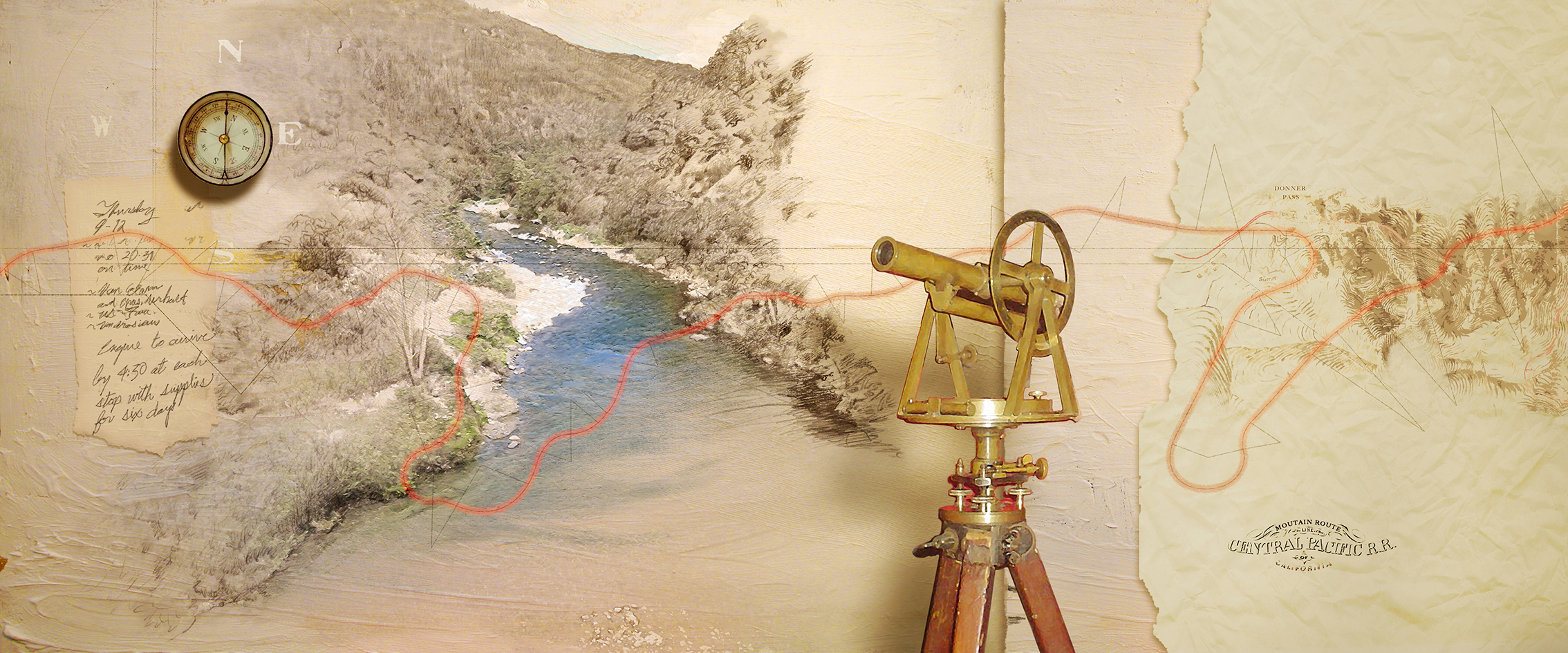






























TRANSCONTINENTAL has been a labor of love for myself and my brother who is authoring much of the project. A unique look into the building of this nation's Transcontinental Railroad it has gone in fits and starts for some time now but a good part has been produced including the artwork and design presented here. It will be completed hopefully well before the sesquicentennial of the railroad's completion coming in 2019.
Click upper right + on images to view enlarged without copy.

A spread from the book, this section concerns the workmen that built the largest American construction project to that time. Principal among them on the western Central Pacific portion through the Sierra Nevada mountains were the Chinese who were acknowledged as perhaps the most productive of all the ethnic groups that participated in the grueling labor.

Though destined not to see the actual construction of the railroad begin due to his untimely death, Theodore Judah was the man most responsible for initiating the project. He was a true visionary who managed to inspire others to join him in his quest to make his dream a reality.

An early spread in the book, in this portion we attempt to capture the essence of the vast American prairie in my brother's prose and my artwork.

My portraits of some of the principle figures involved in the planning, financing and building of the railroad...

Amazing (and often dangerous) trestles were built where necessary along the route, often intended as merely temporary in order to speed the construction.

For their publishing arm I designed and illustrated this cover art for one in a series of books concerning the early pioneer history of Arizona.

I created this spread illustration for a story on the history of the Winslow, Arizona, airport and its significance in the development of American aviation.

This is a cover I designed and illustrated for the publication (now known as Campus Technology Magazine) that featured a lengthy story concerning the growing complexity of campus IT systems.

A spread illustration I designed and illustrated to accompany a lengthy article concerning the "Vision 2012" Baylor University growth and development plan.

Agency: Brisch Ekland Communications, Baltimore, MD — An illustration for a booklet "Are You Wired Right" and for online use to accompany information on the quickly evolving business IT environment.

This was a magazine cover illustration I did for ACS. The title type was a suggestion I included on a layer for the publisher to consider as I felt their existing title type style was so dated. They ignored my type...but they liked my illustration!

The project came to me as just a rough sketch for an illustration to accompany an article on perceptions of “beauty” and how they’ve evolved since the late 19th century. The image was to tread the line between turn-of-the-century photography and period illustration as it was reproduced by early primitive color printing technology (see old magazine cover image below).
Not a typical “retouching” or even compositing process I began by collecting a variety of reference materials. On a very tight schedule and budget I relied on what reference the art director sent along with what I could put together “on the fly” as I composed the image.

The illustration was to represent an imaginary late 19th - early 20th century magazine in a stack of other publications. I first designed the layout of the subjects and composed them into a “Woman’s Journal” magazine cover of period design. That “cover” art is upper left.
Having composed the “cover art” I then needed to make it look like a real magazine with wrinkles and wear to the cover. It also needed to be stacked with other magazines to finalize the illustration.
At lower right you can see how the art was used in the Brio Magazine spread.. The young ladies are viewing an imaginary fashion magazine (SKINNY) of modern times with the resulting looks of surprise, amazement and a little embarrassment.

For something quite different I did this very stylized illustration for a story on all the small and handy electronics that have come to populate our daily lives.